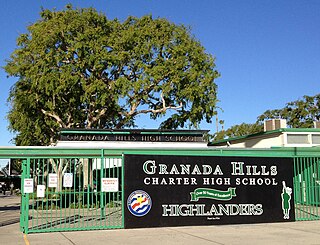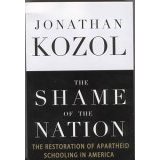Related Research Articles
A school voucher, also called an education voucher, in a voucher system, is a certificate of government funding for students at schools chosen by themselves or their parents. Funding is usually for a particular year, term or semester. In some countries, states or local jurisdictions, the voucher can be used to cover or reimburse home schooling expenses. In some countries, vouchers only exist for tuition at private schools.
"School choice" is a term for pre-college public education options, describing a wide array of programs offering students and their families voluntary alternatives to publicly provided schools, to which students are generally assigned by the location of their family residence. In the United States, the most common—both by number of programs and by number of participating students—school choice programs are scholarship tax credit programs, which allow individuals or corporations to receive tax credits toward their state taxes in exchange for donations made to non-profit organizations that grant private school scholarships. In other cases, a similar subsidy may be provided by the state through a school voucher program. Other school choice options include open enrollment laws, charter schools, magnet schools, virtual schools, homeschooling, education savings accounts (ESAs), and individual tax credits or deductions for educational expenses. School choice is supported by international human rights law including the Universal Declaration of Human Rights art. 26, and the Convention Against Discrimination in Education.

George Ritzer is an American sociologist, professor, and author who studies globalization, metatheory, patterns of consumption, and modern and postmodern social theory. His most notable contribution to date is his concept of McDonaldization, which draws upon Max Weber's idea of rationalization through the lens of the fast food industry. In addition to creating his own theories, Ritzer has also written many general sociology books, including Introduction to Sociology (2012) as well as Essentials to Sociology (2014), and modern and postmodern social theory textbooks. He coined the term “McDonaldization”. Currently, Ritzer is a Distinguished Professor at the University of Maryland, College Park.
McDonaldization is a McWord developed by sociologist George Ritzer in his 1993 book The McDonaldization of Society. For Ritzer, "McDonaldization" is when a society adopts the characteristics of a fast-food restaurant. The process of McDonaldization can be summarized as the way in which "the principles of the fast-food restaurant are coming to dominate more and more sectors of recent idea about the worldwide homogenization of cultures due to globalization.

Charter schools in the United States are primary or secondary education institutions that do not charge fees to pupils who take state-mandated exams. These charter schools are subject to fewer rules, regulations, and statutes than traditional state schools, but receive less public funding than public schools, typically a fixed amount per pupil. There are both non-profit and for-profit charter schools, and only non-profit charters can receive donations from private sources.

Secondary education in Japan is split into junior high schools, which cover the seventh through ninth grade, and senior high schools, which mostly cover grades ten through twelve.
In the U.S. education system, magnet schools are public schools with specialized courses or curricula. "Magnet" refers to how the schools draw students from across the normal boundaries defined by authorities as school zones that feed into certain schools. Attending them is voluntary.
An alternative school is an educational establishment with a curriculum and methods that are nontraditional. Such schools offer a wide range of philosophies and teaching methods; some have strong political, scholarly, or philosophical orientations, while others are more ad hoc assemblies of teachers and students dissatisfied with some aspect of mainstream or traditional education.
A comprehensive school is a public school for elementary aged or secondary aged children that does not select its intake on the basis of academic achievement or aptitude, in contrast to the selective school system where admission is restricted on the basis of selection criteria. The term is commonly used in relation to England and Wales, where comprehensive schools were introduced as state schools on an experimental basis in the 1940s and became more widespread from 1965. With the Blair educational reforms from 2003, they may be part of a local education authority or be a self governing academy or part of a multi-academy trust.
Sixth grade is the sixth year of schooling for teenager in some countries and education systems.

Harold Garfinkel was an American sociologist, ethnomethodologist, and a Professor Emeritus at the University of California, Los Angeles. He is known for establishing and developing ethnomethodology as a field of inquiry in sociology. He is probably best known for his classic book, Studies in Ethnomethodology, which was published in 1967, a collection of articles some of which had previously been published. Selections from unpublished materials were later published in two volumes: Seeing Sociologically and Ethnomethodology's Program. There was also a collection of 'studies of work' by his students which he edited.

The sociology of education is the study of how public institutions and individual experiences affect education and its outcomes. It is mostly concerned with the public schooling systems of modern industrial societies, including the expansion of higher, further, adult, and continuing education.
Tracking is separating students by academic ability into groups for all subjects or certain classes and curriculum within a school. It may be referred to as streaming or phasing in certain schools.

The Shame of the Nation: The Restoration of Apartheid Schooling in America is a book by educator and author Jonathan Kozol. It describes how, in the United States, black and Hispanic students tend to be concentrated in schools where they make up almost the entire student body.
Occupational segregation is the distribution of workers across and within occupations, based upon demographic characteristics, most often gender. Other types of occupational segregation include racial and ethnicity segregation, and sexual orientation segregation. These demographic characteristics often intersect. While a job refers to an actual position in a firm or industry, an occupation represents a group of similar jobs that require similar skill requirements and duties. Many occupations are segregated within themselves because of the differing jobs, but this is difficult to detect in terms of occupational data. Occupational segregation compares different groups and their occupations within the context of the entire labor force. The value or prestige of the jobs are typically not factored into the measurements.

Sex differences in education are a type of sex discrimination in the education system affecting both men and women during and after their educational experiences. Men are more likely to be literate on a global average, although higher literacy scores for women are prevalent in many countries. Men and women find themselves having gender differences when attaining their educational goals. Although men and women can have the same level of education, it is more difficult for women to have higher management jobs, and future employment and financial worries can intensify. Men tended to receive more education than women in the past, but the gender gap in education has reversed in recent decades in most Western countries and many non-Western countries.

School segregation in the United States has a long history. In 1782, African Americans in Boston, including Prince Hall, campaigned against inequality and discrimination in the city's public schools. They petitioned the state legislature, protesting that their taxes supported the schooling of white students while there was no public school open to their children. In 1835, an anti-abolitionist mob attacked and destroyed Noyes Academy, an integrated school in Canaan, New Hampshire founded by abolitionists in New England. In 1849, the Massachusetts Supreme Court ruled that segregated schools were allowed under the Constitution of Massachusetts.

An elementary school is a primary school which is the main point of delivery of primary education in the United States, for children between the ages of 5–11 and coming between pre-kindergarten and secondary education.

Educational inequality refers to unequal access to education, and the unequal outcomes for students that result. The disparities present in academic access among students in the United States are the result of several factors including: government policies, school choice, family wealth, parenting style, implicit bias towards the race or ethnicity of the student, and the resources available to the student and their school. Educational inequality contributes to a number of broader problems in the United States, including income inequality and increasing prison populations.
A social domain refers to communicative contexts which influence and are influenced by the structure of such contexts, whether social, institutional, power-aligned. As defined by Fishman, Cooper and Ma (1971), social domains "are sociolinguistic contexts definable for any given society by three significant dimensions: the location, the participants and the topic". Similarly, Bernard Spolsky defines domains as "[a]ny defined or definable social or political or religious group or community, ranging from family through a sports team or neighborhood or village or workplace or organization or city or nation state or regional alliance".
References
- 1 2 3 Frisco, Michelle L. "School Transitions." Blackwell Encyclopedia of Sociology. Ritzer, George (Ed). Blackwell Publishing, 2007. Blackwell Reference Online. 13 November 2008
- ↑ Könings, Karen, Saskia Brand-Gruwel, Jeroen Van Merriënboer, and Nick Broers. "Does a new learning environment come up to students' expectations? A longitudinal study." Journal of Educational Psychology 100 (2008): 535-48. PsycINFO. Academic Search Premier.
- ↑ Davies, Scott. "School Choice." Blackwell Encyclopedia of Sociology. Ritzer, George (Ed). Blackwell Publishing, 2007. Blackwell Reference Online. 13 November 2008